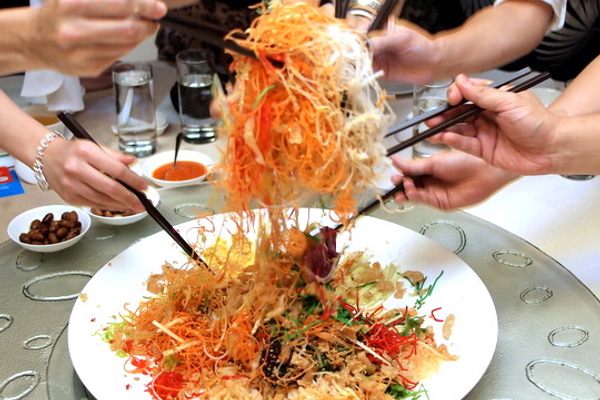Prepared Foods
Debal Curry
Melaka's Kristang community makes a dish so spicy, it's known as “devil's curry.”
Twenty minutes from Melaka’s historic center is the Portuguese settlement. After Portuguese colonizers arrived in southwest Malaysia in the 16th century, many married with members of the local population, creating what is now known as the Kristang community. Here, Malay and Portuguese flavors (along with Dutch, Chinese, and Indian influences) have been entwined, enhanced, and perfected, culminating in a cuisine unlike any other.
One of the most beloved of these dishes the fiery debal curry, or, as it has become recently labeled, “devil’s curry.” Though the term debal means “leftovers” in the Kristang language, the dish’s spiciness has led to its current nickname. Once made from Christmas leftovers, it is now served year-round at restaurants in the area. However, it’s sometimes not on the menu and customers must ask for it.
Though it was traditionally made with pork, Malaysia’s strict Halal traditions mean restaurants now serve the ruby-colored dish with chicken. Potatoes, onions, white vinegar, candlenuts, and mustard seeds provide the base, while a concoction of dried chilies, lemongrass, turmeric, galangal, and other spices supply the intense flavor. The soup-like dish stimulates the mouth with its generous dousing of spice. The flavor soaks into the chicken and potato to ensure every bite has a complex combination of the chilies’ heat, the vinegar’s sour acidity, and the mustard seeds’ pungency. (It should be noted that the spice levels do vary by cook, however, so some curries may be spicier or milder than others.)
Some local chefs say that Kristang cuisine is fading away, as younger generations aren’t carrying on culinary traditions. But there are still restaurants and cooking classes in Melaka that are fighting to preserve the tradition of spicy, complex classics such as debal curry.
Where to Try It
-
Monterios Portuguese Seafood Restaurant
Portuguese Settlement, Melaka, 75050, MalaysiaLocated in the Portuguese settlement, this restaurant makes a rich, spicy debal curry.
-
The Majestic Website
188 Jalan Bunga Raya, 75100, MalaysiaMelba Nunis, a Kristang chef, makes authentic dishes at this hotel's restaurant.
Written By
c charliekitcatSources
- www.bbc.com/travel/gallery/20181211-malaccas-forbidding-debal-curry?ocid=twtvl
- www.thestar.com.my/news/nation/2016/09/16/malacca-debal-curry/
- www.bbc.com/news/world-asia-38592216
- www.majesticmalacca.com/pages/downloads/The%20Kristang%20Culinary%20Journey.pdf
- rasamalaysia.com/devils-curry/
- theboywhoatetheworld.com/2016/04/26/theboywhoatetheworld-cooks-devils-curry-chicken/
- www.star2.com/food/food-news/2016/09/21/great-malaysian-dishes-malacca-debal-curry/
The Atlas Obscura Podcast is Back!















